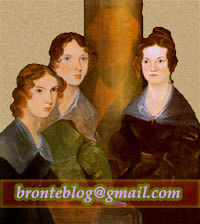Last week, images were leaked from the shoot of Emerald Fennell’s forthcoming adaptation of Emily Brontë’s Wuthering Heights. Margot Robbie, who plays Catherine Earnshaw, has been seen in a white wedding dress, which has distressed self-proclaimed historical experts.
Has Fennell committed a crime against period dress? Even Vogue felt the need to weigh in.
Fennell’s Wuthering Heights has been under fire since it announced lead casting last September. Part of this was inevitable: a female artist such as Fennell, who is both hyper-talented and hyper-privileged, gets two successful films or albums before the envious backlash kicks in.
It didn’t help that, in tackling Wuthering Heights, she was taking on one of the few classic novels to touch with nuance on race in 19th-century England – a nuance altogether lacking from the social media chat about ethnicity and casting.
Robbie’s co-star is Jacob Elordi, a white, dark-haired actor who plays the adult incarnation of the outcast orphan Heathcliff. Brontë clearly wrote Heathcliff as a character who is ostracised in rural Yorkshire in part because he looks foreign to English eyes.
In Andrea Arnold’s 2011 adaptation, Heathcliff was played by James Howson, the first actor of black heritage to take the role.
To many racially conscious Brontë fans, including prominent American film critics, Fennell’s choice of a white actor felt like a step backwards. But what form Heathcliff’s “foreignness” takes is deliberately ambiguous in Brontë’s text. In a much-analysed line, one neighbour says Heathcliff could be “a little Lascar, or an American or Spanish castaway”. Arnold herself had originally searched for a Romany actor.
All the text tells us for sure is that Heathcliff’s adoptive father claims to have found him on the streets of Liverpool. The city’s associations with the slave trade often suggest to contemporary readers that Heathcliff is the child of an enslaved African. That is entirely possible.
But it is also possible he was the child of the seafaring Spanish and Basque community, established in Liverpool during the 19th century. One such prominent family was the Elordietas. They would have looked not unlike a certain Jacob Elordi, whose Basque father emigrated to Australia at the age of eight.
When we assume that a dark-haired outsider must be of African origin, we let English racism off the hook. We forget how narrowly beauty standards defined “Englishness” to exclude even a hint of darker colouring. English chroniclers under the Tudors, keen to whip up anti-Spanish prejudice, would routinely accuse the Spanish population of being miscegenated with north African blood, attributing conventional Spanish dark looks to this ancestry. These attitudes were still around in Brontë’s day. (Kate Maltby)
Discover descriptive language in 'Wuthering Heights'
Emily Brontë's Wuthering Heights is famous for its vivid descriptive language.
How can you forget the moody landscapes of the Yorkshire moors?
From this, you can learn how adjectives are effectively used to evoke atmosphere and emotion.
By studying Brontë's use of descriptive language, you can gain insights into crafting more expressive sentences. (Anuji Trehaan)
Romances, in particular, were charged with corrupting women’s virtue as authors like the Brontë sisters and Jane Austen popularised the genre in the 18th century. (Gwendolyn Smith)
Austen had many critics after her death. Charlotte Brontë called her writing “a carefully-fenced, highly-cultivated garden … I should hardly like to live with her ladies and gentlemen in their elegant but confined houses.” (...)
The greatest praise for Jane Austen, however, comes from Virginia Woolf. Writing about women writers in A Room Of One’s Own, this is what she says about Jane Austen: “Here was a woman about the year 1800 writing without hate, without bitterness, without fear, without protest, without preaching.” Woolf regarded Jane Austen and Emily Brontë as two women who wrote as women write and not as men write and goes on to say, “What genius, what integrity it must have required in face of all that criticism, in the midst of that purely patriarchal society to hold fast to the thing as they saw it without shrinking. Only Jane Austen did it, and Emily Brontë. They wrote out of themselves,” she added. (Shashi Despande)
Newsday talks about a recent talks by Sarah Jessica Parker and her mother at Adelphi University Writers and Readers festival:
[Adriana] Trigiani asked Parker and Forste a series of questions about formative books they hold dear, such as the first book they remembered reading and owning, comparing Jane Eyre to Wuthering Heights, and whether it’s important for a main character to have a moral compass. (Maureen Mullarkey)








0 comments:
Post a Comment